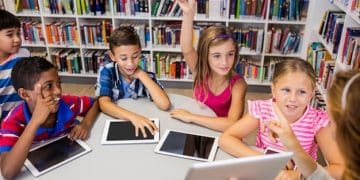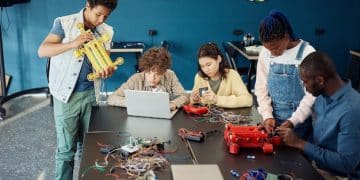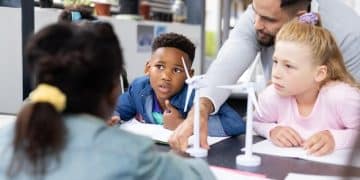The Future of Remote Learning: Best Practices and Emerging Technologies
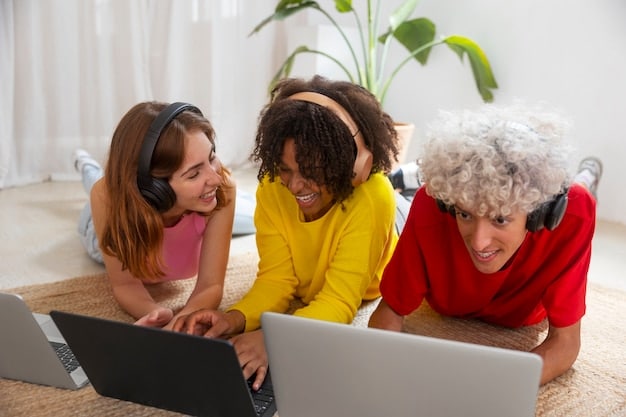
The future of remote learning hinges on integrating best practices and emerging technologies to create engaging, accessible, and effective educational experiences.
The landscape of education is rapidly evolving, and remote learning has emerged as a significant force, reshaping how knowledge is acquired and disseminated. With the continuous advancement of technology, the future of remote learning promises even more innovative and accessible educational experiences. Let’s delve into the best practices and emerging technologies that are paving the way for the future of remote learning.
Embracing Personalized Learning Paths
Personalized learning has become a cornerstone of modern education, emphasizing tailored instruction to meet individual student needs and preferences. In the realm of remote learning, this approach is particularly valuable, offering opportunities to create customized learning paths that enhance engagement and academic outcomes.
Adaptive Learning Platforms
Adaptive learning platforms use algorithms to adjust the difficulty and pace of educational content based on a student’s performance. By continuously assessing a student’s understanding, these platforms can identify areas where they excel or struggle, providing targeted support and resources.
Personalized Content Delivery
Technology enables the delivery of content in various formats, catering to different learning styles. Whether it’s video lectures, interactive simulations, or text-based materials, students can access educational content in a way that resonates with them.
- 📊 Adaptive learning platforms adjust to student performance.
- 📚 Personalized content delivery caters to diverse learning styles.
- 🤝 Individualized support addresses specific student needs.
- 🎯 Customized learning paths enhance engagement and outcomes.
Personalized learning paths are transforming remote education by making it more flexible and responsive to individual student needs.
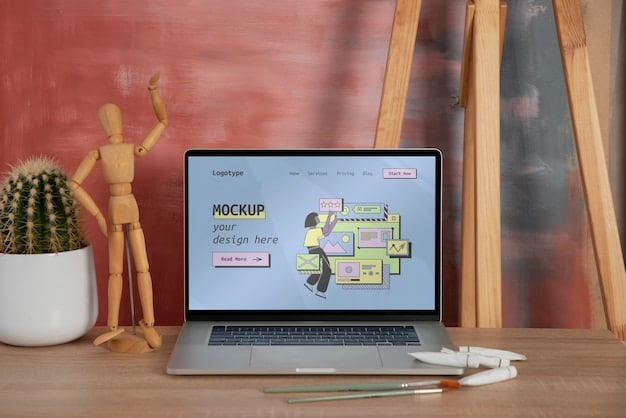
Leveraging Artificial Intelligence in Education
Artificial intelligence (AI) is revolutionizing various industries, and education is no exception. In remote learning, AI offers numerous opportunities to enhance teaching, learning, and administrative processes. AI-powered tools can provide personalized feedback, automate repetitive tasks, and offer insights into student performance.
AI-Powered Tutors
AI-powered tutors offer personalized support and guidance to students, answering questions, providing feedback, and offering targeted instruction. These virtual tutors are available 24/7, ensuring that students have access to assistance whenever they need it.
Automated Assessment and Grading
Grading assignments and providing feedback can be time-consuming for educators. AI can automate the assessment process, providing instant feedback to students and reducing the administrative burden on teachers. This allows educators to focus on more meaningful interactions with students.
AI is enhancing remote education by making it more efficient, personalized, and accessible.
Enhancing Engagement with Virtual and Augmented Reality
Virtual reality (VR) and augmented reality (AR) technologies are creating immersive and interactive learning experiences that can significantly enhance student engagement. These technologies allow students to explore virtual environments, interact with simulations, and visualize complex concepts in a way that traditional learning methods cannot replicate.
Virtual Field Trips
VR enables students to embark on virtual field trips to historical sites, museums, and natural environments without leaving their homes. These immersive experiences make learning more engaging and memorable.
Interactive Simulations
AR overlays digital information onto the real world, allowing students to interact with simulations and models in a tangible way. This is particularly valuable in subjects like science and engineering, where hands-on experimentation can be challenging in remote settings.
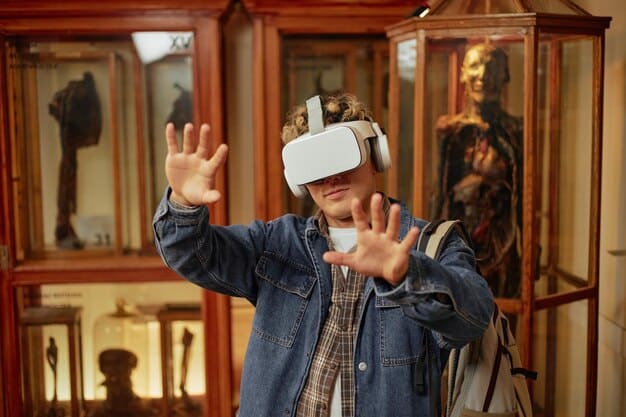
VR and AR are revolutionizing remote education by making learning more interactive, engaging, and immersive.
Promoting Collaboration and Communication
Effective collaboration and communication are essential components of a successful learning environment. In remote learning, it’s crucial to leverage technology to foster collaboration and communication among students and between students and educators. This can be achieved through various tools and strategies.
Virtual Collaboration Tools
Tools like collaborative documents, shared whiteboards, and project management platforms enable students to work together on assignments, brainstorm ideas, and provide feedback to one another.
Communication Platforms
Video conferencing, instant messaging, and discussion forums facilitate real-time and asynchronous communication between students and educators. These tools enable students to ask questions, participate in discussions, and receive timely feedback.
- 🤝 Virtual collaboration tools enable teamwork.
- 💬 Communication platforms facilitate real-time interaction..
- 📢 Regular feedback enhances engagement.
- 🌐 Building a strong community fosters connection.
Promoting collaboration and communication enhances the remote learning experience by fostering a sense of community and providing students with the support they need to succeed.
Addressing Accessibility and Equity
As remote learning becomes more prevalent, it’s essential to address issues of accessibility and equity to ensure that all students have the opportunity to succeed. This involves providing access to technology, addressing digital literacy gaps, and creating inclusive learning environments.
Providing Technology Access
Ensuring that all students have access to computers, internet connectivity, and necessary software is crucial. This may involve providing subsidized devices, internet access programs, and technical support.
Addressing Digital Literacy Gaps
Providing training and resources to help students and educators develop digital literacy skills is essential. This includes teaching basic computer skills, online safety, and effective use of digital tools.
Addressing accessibility and equity is essential for ensuring that remote learning is a viable option for all students, regardless of their background or circumstances.
Ensuring Effective Assessment and Feedback
Assessment and feedback are critical for gauging student understanding and providing guidance for improvement. In remote learning, it’s essential to use a variety of assessment methods and provide timely, constructive feedback to help students stay on track.
Formative Assessments
Formative assessments, such as quizzes, polls, and short writing assignments, provide ongoing feedback to students and educators, allowing them to identify areas where students are struggling and adjust instruction accordingly.
Summative Assessments
Summative assessments, such as exams and projects, evaluate student learning at the end of a unit or course. These assessments should be designed to measure student understanding of key concepts and skills.
Effective assessment and feedback are essential for ensuring that students are learning and making progress in remote learning environments.
Developing Supportive Learning Environments
Creating a supportive and inclusive learning environment is crucial for promoting student well-being and academic success. This involves fostering a sense of community, providing social-emotional support, and addressing issues of isolation and disconnection that can arise in remote settings.
Building a Sense of Community
Creating opportunities for students to interact with one another through online discussion forums, virtual study groups, and collaborative projects can help build a sense of community and reduce feelings of isolation.
Providing Social-Emotional Support
Offering access to counseling services, mentoring programs, and peer support groups can help students manage stress, cope with challenges, and develop resilience.
By prioritizing student well-being and creating a supportive learning environment, educators can help students thrive in remote learning settings.
| Key Point | Brief Description |
|---|---|
| 🧑🏫 Personalized Learning | Tailored instruction to meet individual student needs. |
| 🤖 AI Integration | Using AI for tutoring, assessment, and personalized feedback. |
| 🌍 VR/AR Experiences | Creating immersive learning with virtual and augmented reality. |
| 🤝 Collaboration & Communication | Fostering a sense of community through virtual tools. |
Frequently Asked Questions
▼
Effective remote learning hinges on personalized content, interactive technologies, and strong communication channels, fostering an engaging and supportive environment for students.
▼
AI offers personalized learning paths, automated assessment, and virtual tutoring, catering to individual student needs and freeing up educators to focus on deeper engagement.
▼
VR and AR provide immersive learning experiences, such as virtual field trips and interactive simulations, making abstract concepts more tangible and enhancing student engagement.
▼
Collaboration is crucial in remote learning as it fosters a sense of community, encourages teamwork, and provides students with opportunities to learn from and support one another.
▼
Ensuring accessibility in remote education involves providing access to technology, addressing digital literacy gaps, and creating inclusive learning environments for all students, regardless of their background.
Conclusion
The future of remote learning is bright, with emerging technologies and best practices poised to transform education as we know it. By embracing personalized learning, leveraging AI, enhancing engagement with VR/AR, promoting collaboration, addressing accessibility, and ensuring effective assessment, we can create remote learning experiences that are engaging, effective, and equitable for all students.
